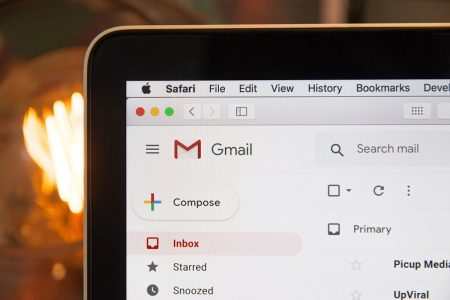Last Updated on July 27, 2022 by Michelle Ball
By Michelle Ball, Sacramento California Expulsion, Special Education, sports/CIF, College, Education and School Attorney/Lawyer for Students since 1995
Millions of students have been impacted by the Coronavirus (COVID-19) in California and the US. Being a student forced home with no or limited access to education has been detrimental to say the least. The lack of instruction, increased time on social media or television, and lack of in-person socialization is changing students’ lives. How do we navigate this situation to ensure that our kids don’t just languish, overlooked, waiting for help?
As most school districts have announced closures the rest of the school year and schools will not start the 2020-21 schoolyear until August 2020, this will be a long long wait for education: roughly five months if school stopped in March 2020.
Some school districts have done very little, and students have not received books, have no online lectures or instruction, and have not heard from their teachers. Some districts are doing more, but it is very slow. Even in a “perfect” online situation, there will be dramatic limitations due to the digital format. It is also likely that despite many great educational resources online, the majority of students will be dependent on their local schools for instruction, assignments, materials and otherwise.
As most school districts have announced closures the rest of the school year and schools will not start the 2020-21 schoolyear until August 2020, this will be a long long wait for education: roughly five months if school stopped in March 2020.
Some school districts have done very little, and students have not received books, have no online lectures or instruction, and have not heard from their teachers. Some districts are doing more, but it is very slow. Even in a “perfect” online situation, there will be dramatic limitations due to the digital format. It is also likely that despite many great educational resources online, the majority of students will be dependent on their local schools for instruction, assignments, materials and otherwise.
Students are now truly just a list of names or a picture on a computer.
To get any attention or help, parents and students will need to step up, taking appropriate action to get services for their languishing kids.
I have always promoted to parents to put all requests and issues in writing when communicating with a school on student needs or problems. With email, putting things in “writing” is easy. A nice handy record is always developed. This can be good and bad depending on how someone communicates, so always keep your manners in when emailing.
Emailing and/or sending formal correspondence to schools regarding student grading, materials, instruction, access to education and issues is even more important now.
Any written request needs to be clear, organized and have certain elements. For example, an email should ensure the “RE:” line is clear, and that in the body of the email the student is identified properly with their name, student ID/date of birth, as appropriate, school, grade level, and that the needs and issues are outlined, with the exact requests listed. It is always easiest to get what you want if you ask for it first. Otherwise, schools will create their own idea of what you want, or do nothing at all.
It should also be sent to the appropriate parties, including perhaps the Principal, teachers, and maybe even someone at the school district, as appropriate.
It cannot be understated how important professional communication outlining the issues, needs and desired outcome is for parents, particularly when many are vying for attention. Without this, schools may not even reply to an email. They are presumably pretty busy, and won’t know what to do with an email that says “Help me, my son is at home doing nothing,” but may reply to one with the parent name, student name, school, grade, current classes, what the student is doing and what the student needs from the school right now. Clear communication is vital.
If the school fails to follow-up, additional communication should be sent, and maybe even via regular mail or facsimile (if available). Higher ups should be contacted as needed.
Some of the things parents should be asking for, could include:
1) School textbooks
2) Other materials needed for classes
3) Assignment lists and due dates
4) Instructions for those assignments
5) Teacher notes and overheads
6) Video or live instruction in all subjects, preferably daily at the same time a student normally had a class
7) Technology that the student may be lacking to access their education
8) Instruction on any technology a student may need to access their education
9) Tutoring on-line for all classes as needed and hours for such
10) Policies on due dates, methods of turning assignments in, any grace period for turning work in, and any changes to the class grading policies
11) Testing instructions, including when that will occur, and if it will be open book
12) Any other item the student may be lacking to receive their education.
And remember, public school education is supposed to be free, so these items should be free of charge.
It is really important that students, who are now digital images, don’t get lost or forgotten. Inevitably, many will. Many will not get materials or assignments. Others will never do anything they are sent. Still others won’t ever be able to access any instruction that may be available or won’t understand it. It is critical that parents step in to help them or they may be severely damaged by the Coronavirus situation and forced exclusion from school, even if they never become physically ill.
Emailing and/or sending formal correspondence to schools regarding student grading, materials, instruction, access to education and issues is even more important now.
Any written request needs to be clear, organized and have certain elements. For example, an email should ensure the “RE:” line is clear, and that in the body of the email the student is identified properly with their name, student ID/date of birth, as appropriate, school, grade level, and that the needs and issues are outlined, with the exact requests listed. It is always easiest to get what you want if you ask for it first. Otherwise, schools will create their own idea of what you want, or do nothing at all.
It should also be sent to the appropriate parties, including perhaps the Principal, teachers, and maybe even someone at the school district, as appropriate.
It cannot be understated how important professional communication outlining the issues, needs and desired outcome is for parents, particularly when many are vying for attention. Without this, schools may not even reply to an email. They are presumably pretty busy, and won’t know what to do with an email that says “Help me, my son is at home doing nothing,” but may reply to one with the parent name, student name, school, grade, current classes, what the student is doing and what the student needs from the school right now. Clear communication is vital.
If the school fails to follow-up, additional communication should be sent, and maybe even via regular mail or facsimile (if available). Higher ups should be contacted as needed.
Some of the things parents should be asking for, could include:
1) School textbooks
2) Other materials needed for classes
3) Assignment lists and due dates
4) Instructions for those assignments
5) Teacher notes and overheads
6) Video or live instruction in all subjects, preferably daily at the same time a student normally had a class
7) Technology that the student may be lacking to access their education
8) Instruction on any technology a student may need to access their education
9) Tutoring on-line for all classes as needed and hours for such
10) Policies on due dates, methods of turning assignments in, any grace period for turning work in, and any changes to the class grading policies
11) Testing instructions, including when that will occur, and if it will be open book
12) Any other item the student may be lacking to receive their education.
And remember, public school education is supposed to be free, so these items should be free of charge.
It is really important that students, who are now digital images, don’t get lost or forgotten. Inevitably, many will. Many will not get materials or assignments. Others will never do anything they are sent. Still others won’t ever be able to access any instruction that may be available or won’t understand it. It is critical that parents step in to help them or they may be severely damaged by the Coronavirus situation and forced exclusion from school, even if they never become physically ill.
Michelle Ball is a student advocate and attorney, helping students since 1995.




